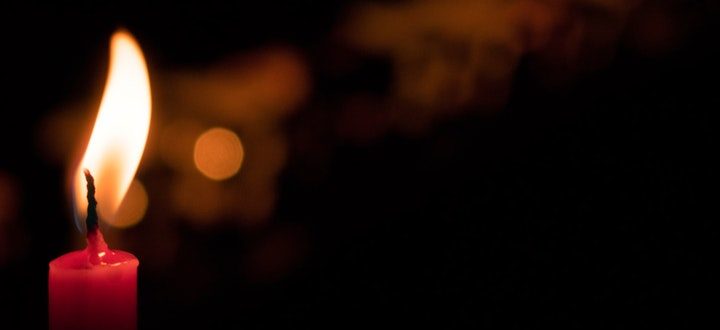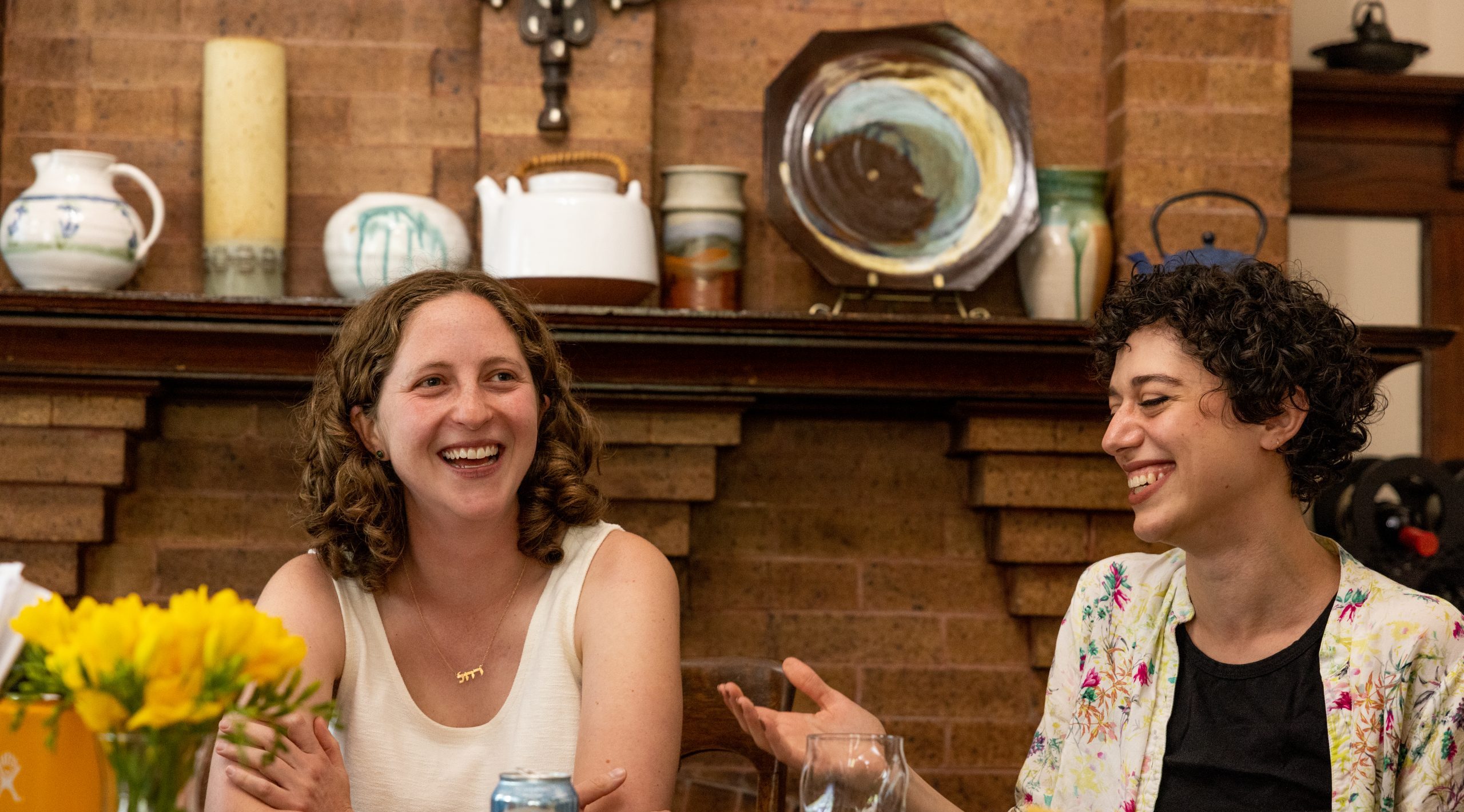
Aug 1, 2019 | by Rabbi Lisa Goldstein, Former Executive Director, Institute for Jewish Spirituality

The phrase “community of practice” is one of those bandied-about terms that seems particularly suited to Jewish spiritual groups: Community and practice – how obvious and how obviously beneficial!
And yet, it’s also not so simple. Just because you happen to share a profession, a craft or a practice with a group of other people doesn’t mean that the group will in fact be supportive or a good learning environment. The stories to the contrary are many and we might even say that particularly in our individualistically oriented society, the difficulties of communities of practice sometimes seem to outweigh the benefits.
One way to address this is to think of creating communities of practice as a spiritual practice itself. We can start by setting explicit intentions. By setting an intention, we have an anchor that we can return to – again and again – when we notice that we have moved away from the intention.
Those of you who have participated in IJS retreats know that we begin each retreat with guidelines about creating intentions around safety. They include things like being aware of judgment arising and trying to hold it with curiosity instead of conviction; assuming and extending welcome; allowing people to listen to their own inner voice, even when we think we know what it should say; “double confidentiality” which gives people the space to say something vulnerable and not have to revisit it unless they so choose. These guidelines help create intentions for a community of practice that supports the participants in the community in doing their own deep work of truth telling and loving kindness.
In your communities of spiritual practice, what are your intentions? What kind of community are you intending to create? What kind of transformation are you hoping to cultivate? What are the conditions that will help facilitate that? How do you communicate them to the entire community?
It sounds easy – and it’s not, even in the relatively small and temporary context of a retreat. But, as those of you who have participated in IJS retreats also know, the effort is worth it. As our summer retreat season closed, we saw once again the true power of a community of seekers, coming together and finding a safe environment, the way the heart can open, bonds can form and deepen, awareness expand. And those experiences can give us inspiration and fortitude to take with us as we continue on our way.

Jun 25, 2019 | by Rabbi Lisa Goldstein, Former Executive Director, Institute for Jewish Spirituality

Last week we offered a meditation retreat for activists from across the country, thanks to a grant from the Nathan Cummings Foundation in memory of Rabbi Rachel Cowan. At the end of a few days of cultivating a loving heart through meditation, prayer and silence, the participants shared their thoughts and experiences of connecting contemplative practice with their work as activists. Several of them expressed the tension between the rage they felt in response to their own experiences of oppression which then fuels their work and the healing power of reaching out – and in – in love. It was such a relief to immerse in love. But what about the justifiable anger at all that is hurtful and unjust in our world?
This question caused me to reflect in turn on an experience of conflict that arose in my own life. In the aftermath of my own anger and hurt, I struggled with my habitual response of withdrawing, of creating greater separation between myself and the other. I know that separation may initially feel comforting, but it also brings greater suffering. I often teach the midrash that says that when God separated the upper waters from the lower waters on the second day of creation, the lower waters wept over the separation. Out of compassion for their anger and hurt, God refrained from saying “It is good” and indeed the Torah does not include that blessing for the second day. Separation does deepen suffering; in fact, one of the aspects of the suffering is that when we are in its grip, it is more difficult to reach out in love.
And yet, as one of the participants commented, aren’t we all deeply yearning for more love?
Perhaps the answer is to hold it all, to make space for the anger and hurt, these difficult but important human experiences that both protect us and separate us from others. After all, separation was essential for creation to happen. The practice can be not to get stuck there. From the separation it is sometimes possible to reach out again in love which can lead to healing. In the case of the conflict I experienced, the conversations that took place afterwards created a new sense of closeness and understanding. That is not always possible. But even when it is not, to reach in with love and compassion for our own suffering can be a transformative intention. And that itself is a blessing.

Dec 3, 2018 | by Rabbi Lisa Goldstein, Former Executive Director, Institute for Jewish Spirituality

Hanukkah is upon us and with it the aptness of all the metaphors of bringing light into the darkness. A less examined theme of the holiday, however, at least in many spiritual circles, is holy boldness – the decisive action that the Macabees took in the face of seemingly insurmountable odds that enabled them to defeat the wicked government that vastly outweighed them.
We tend to shy away from exploring this kind of strong action because it can seem so antithetical to the spiritual endeavor of finding inner peacefulness and because it can too easily veer into bold fanaticism, as the Hasmonians themselves exemplified. And yet, holy boldness, the courage of the spiritual warrior, is an important middah, or trait, even (and maybe especially) for the contemplative repertoire.
One teaching on how to approach this boldness comes from the daily liturgy. In the morning service, the first prayer before the Shema offers an image of angels. The prayer book describes the angels in vivid terms: “They are all loved, they are all clear, they are all bold and they all do the will of their Maker with fear and awe.”
At first, the description appears rather random. Why those three particular adjectives, other than the fact that the Hebrew words for “loved,” “clear” and “bold” follow the order of the Hebrew alphabet? But if we look carefully, using what we know from our contemplative practice, something quite beautiful emerges.
First, the angels know that they are ahuvim, loved. This is the crucial first step, to take in the awareness of being precious, seen, cherished. From that place of warmth and connection, they can be brurim, clear. Feeling loved can help clear the delusions so that we can see with greater clarity what needs to be done, as well as our motivation for acting. And then, when the path forward is clear, the angels can act as giborim, as courageous and bold heroes. But even here, they are aligning themselves with humility and a sense of serving – not of their own will, but of the great Source of life and creativity in the universe.
What marvelous instructions! A courage that is rooted in love, shone through with clarity and in humble alignment with what needs to happen. May this Hanukkah provide us with opportunities to explore this holy boldness so that we can through our actions help bring more light into this dark season.

Mar 9, 2018 | by Rabbi Lisa Goldstein, Former Executive Director, Institute for Jewish Spirituality
 Part of my daily practice includes a fragment of a teaching from the Piaseczner Rebbe, Kalonymus Kalman Shapira. He instructed his students to work with Psalm 86:11: “Teach me, YHVH, your way that I may walk in your truth. Unify my heart to revere your name.” He taught a particular melody for the verse which I learned from Rabbi Nehemia Polen. I chant it to myself at the end of my meditation and before my prayer.
Part of my daily practice includes a fragment of a teaching from the Piaseczner Rebbe, Kalonymus Kalman Shapira. He instructed his students to work with Psalm 86:11: “Teach me, YHVH, your way that I may walk in your truth. Unify my heart to revere your name.” He taught a particular melody for the verse which I learned from Rabbi Nehemia Polen. I chant it to myself at the end of my meditation and before my prayer.
When I began working with this verse, I was struck by the goal of learning to revere God’s name. I am not typically drawn to yirah, the particular combination of fear and awe that is the mainstay of so much “Old Testament” religion. Jewish spiritual masters focus on both love and reverence as the twin hallmarks of devotion and in this day and age, don’t we need more love? Don’t we have enough fear?
And yet, this verse calls to me. It is becoming a more and more compelling instruction in humility which opens the possibility of living my life in attunement to something much beyond myself that also includes myself. And it turns out that yirah is the key.
Here is how I am working with the verse as an intention for my day. When I say, “Teach me your way that I may walk in your truth,” I remind myself that there are so many ways to go through the day before me. I will doubtlessly encounter all kinds of people; I will probably be annoyed at some point; I hopefully will experience a little connection. However, no matter what greets me, the one thing I can be sure of is that some spark of Divinity will be present in it. Whether I see it or not is up to me. I place myself in the position of the student: teach me, God, to go through my day seeing you in everything I encounter. I don’t really know how to do this. But if I see you, maybe I will respond more wisely and appropriately.
“Unify my heart to revere your name.” This part of the verse gives me the chance to bring a little compassion to the fragmentation of my own heart, all its distractions, its insecurities, the fragile ego that always wants more love, more affirmation. And then it reminds me that the greatness in the world is not my ego after all. It is that life force in everything, that flows in me and through me and which I seek to serve. When I can remember that, my life takes on its greatest meaning.
To me, this whole practice is a practice of humility, of remembering that the value of my day is not whether it was a “good” day or not, or whether pleasant things happened to me. The value of my day is in how I learn to see the teeming network of life that I am a part of, that I contribute to and am impacted by. Yirah, fear and awe, opens to ahavah, flowing love. I am ready for my day.
Jun 7, 2017 | by Rabbi Lisa Goldstein, Former Executive Director, Institute for Jewish Spirituality

Early this spring, I traveled to California to celebrate my father’s 90th birthday. Members of my extended family from as far away as Fiji and New Zealand came to gather, and I was amazed by the connections I saw between cousins who so rarely have the opportunity to meet in person, the instant bonds of love that we offered—even though we live such different lives!
One of my favorite interactions I witnessed that day was between my father, , and a visiting cousin, who just turned seven. This young boy was telling my father all about the planets and the solar system, which he was learning about in school, and found exciting and fascinating. My father, an astronomer who has been studying the planets since the 1960s, could certainly—in today’s “I know more than you!” world—have brushed this little cousin off. Did he need a little boy to tell him about the retrograde rotation of Venus, or the rings of Saturn, things he himself had discovered? Of course not!
But he did. He listened to this little cousin, as if the way he saw the planets and the stars was the most interesting thing in the whole world to him. And only when he knew that learning from him would bring this cousin even more joy and excitement did he begin to tell him about his own ground-breaking work.
The Psalmist teaches us that the world will be built through chesed (Psalm 89). But what, as we ask in our Tikkun Middot course, is so great about the middah of chesed that it, among all others, will build the worlds?
Chesed is one of the few mitzvot in the Mishnah with no minimum requirement for it to “count.” Rabbi Shlomo Wolbe writes, “A nice word, a smile – these can give new life to someone who has given up on himself! A word of encouragement can bring joy. These are such small things [yet so significant!]”
To build our daily worlds through a lens of lovingkindness is to approach each act we do with a perspective of love. Not to ask: how might I make this moment better? But to ask: How might I relate to this moment—as it already is—with love?
How might I hold myself with love?
I hope the practices enclosed in this month’s letter give you some space to find your own way to build your own world with love.








 Part of my daily practice includes a fragment of a teaching from the Piaseczner Rebbe, Kalonymus Kalman Shapira. He instructed his students to work with Psalm 86:11: “Teach me, YHVH, your way that I may walk in your truth. Unify my heart to revere your name.” He taught a particular melody for the verse which I learned from Rabbi Nehemia Polen. I chant it to myself at the end of my meditation and before my prayer.
Part of my daily practice includes a fragment of a teaching from the Piaseczner Rebbe, Kalonymus Kalman Shapira. He instructed his students to work with Psalm 86:11: “Teach me, YHVH, your way that I may walk in your truth. Unify my heart to revere your name.” He taught a particular melody for the verse which I learned from Rabbi Nehemia Polen. I chant it to myself at the end of my meditation and before my prayer.
